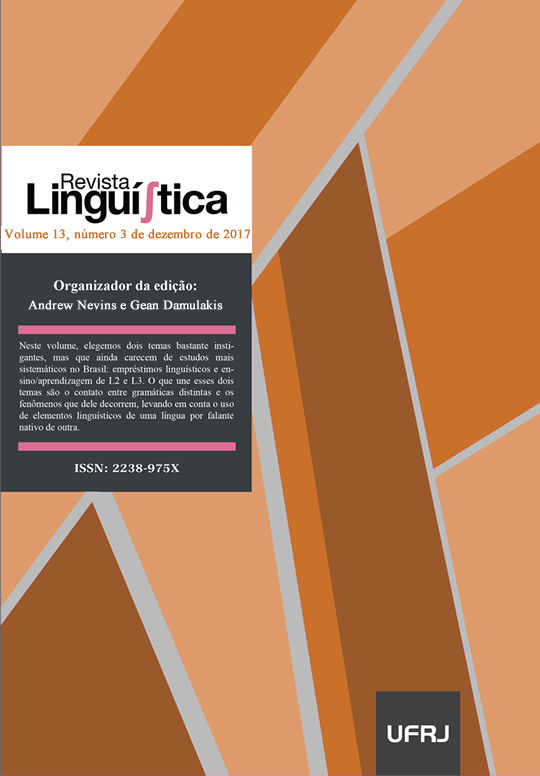‘Noruega', Ndo ro hwêkê, Peido na cara
DOI:
https://doi.org/10.31513/linguistica.2017.v13n3a16384Abstract
Este artigo descreve as principais estratégias usadas em KÄ©sêdjê para nomear novos objetos e conceitos: pareamento fonológico chistoso, pareamento fonossemântico, criação de calques e extensão de signifcado. Embora atualmente a maioria dos KÄ©sêdjê seja fluente em português, a simples adaptação de empréstimos, embora praticada, é rara. As estratégias principais são baseadas no pareamento fonológico, isto é, em encontrar uma palavra ou sintagma em KÄ©sêdjê que se aproxime da palavra portuguesa original. As aproximações mais bem aceitas entre os falantes são aquelas que têm uma matiz chistosa. Aquelas cuja semântica se aproxima à da palavra original também tendem a ter sucesso. Antes de os KÄ©sêdjê serem fluentes em português, a extensão de signifcado foi muito importante, e também é descrita neste artigo.
---
DOI: http://dx.doi.org/10.31513/linguistica.2017.v13n3a16384
Downloads
Published
Issue
Section
License
Authors who publish in the Revista Linguí∫tica agree with the following terms:
The authors maintain their rights, ceding to the journal the right to first publication of the article, simultaneously submitted to a Creative Commons license permitting the sharing with third-parties of published content as long as it mentions the author and its first publication in the Revista Linguí∫tica.
Authors may enter into additional agreements for the non-exclusive distribution of their published work (for example, posting in online institutional or non-profit repositories, or book chapters) so long as they acknowledge its initial publication in the Revista Linguí∫tica.

The journal Revista Linguí∫tica is published by the Post-Graduate program in Linguistics of UFRJ and employs a Creative Commons - Attribution-NonCommercial 4.0 International (CC-BY-NC).









